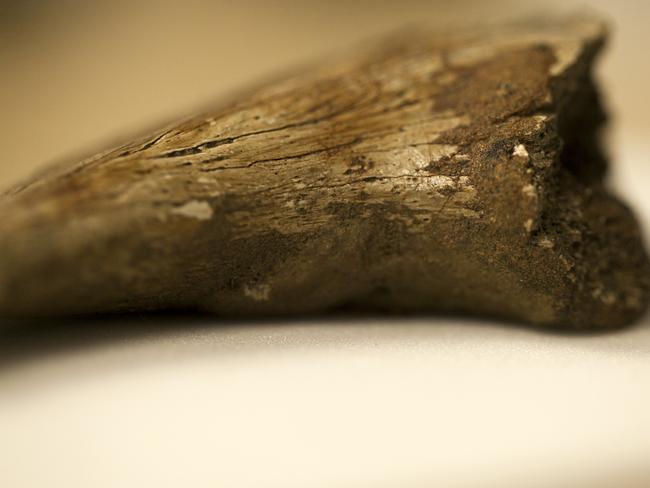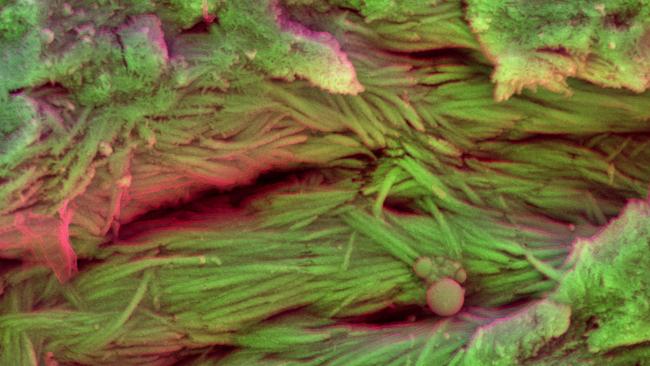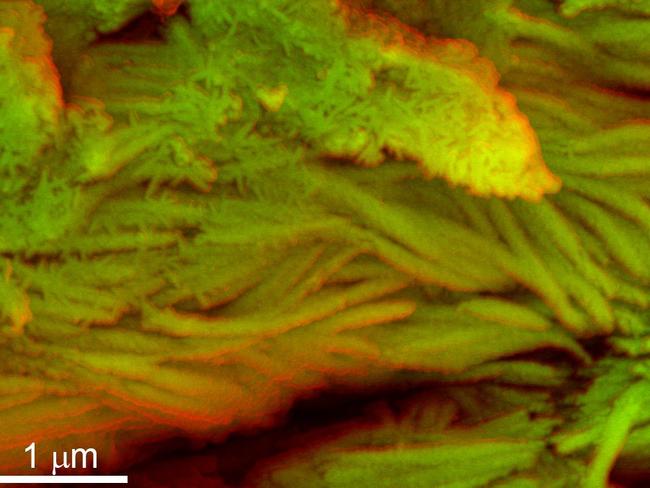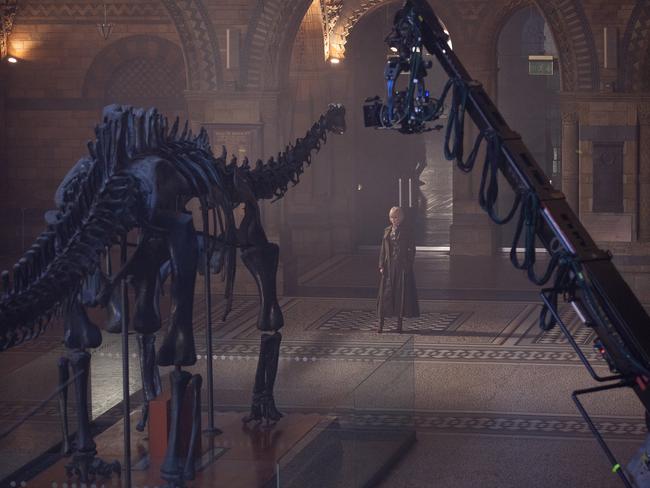British scientists find 75-million-year-old dinosaur blood
THEY were so badly damaged, they were hidden away in a storeroom. But these 75-million-year-old dinosaur fossils have revealed something truly incredible.
BRITISH researchers have discovered red blood cells and collagen fibres inside the bones of dinosaurs kept at the Natural History Museum for more than a century — but DNA is still next to impossible, scientists say.
Research team member Susannah Maidment, of Imperial College London, said the team have extracted “what we think are red blood cells and collagen fibres” from 75-million-year-old dinosaur fossils.
“All the evidence points to that, and it’s very difficult to come up with anything else they might be — but we have to employ a sensible level of scepticism”.

According to The Independent, this is not the first time scientists have extracted soft tissue from the dinosaur fossils. However, it is the first time that researchers have been able to extract blood cells from such poorly preserved specimens.
In fact, the fossils were so badly damaged they were kept in the museum storeroom, rather than on display for visitors to see, and were described by the scientists as “crap”.
“It’s really difficult to get curators to allow you to snap bits off their fossils. The ones we tested are crap, very fragmentary, and they are not the sorts of fossils you’d expect to have soft tissue,” Ms Maidment said.
Using molecular microscopy, the team analysed eight bone fragments from dinosaurs that lived some 75-million-years-ago, in the Cretaceous period.

The samples included the claw of a meat-eating dinosaur, a few toe bones from a ceratopsid (a group that included the horned Triceratops) and a duck-billed hadrosaur, and rib fragments from an unknown species.
“They were not considered to be good enough for display, and as our techniques are destructive, we ended up being given these rather rubbish fossils to test.
“However, to our surprise, we found evidence of soft tissues,” Dr Maidment said.
All the bones are from the Dinosaur Park Formation in Alberta, Canada, and have been in the Natural History Museum in London since they were collected about 100 years ago.

“What we found are structures that could be original red blood cells from the dinosaur specimens and also other structures that could be the original collagen fibres,” study co-author Sergio Bertazzo said.
Other researchers have previously found remnants of organic material in dinosaur bones, but in exceptionally well-preserved fossils — which are few and far between.
“Therefore we indicate that the likelihood of finding organic material in fossils is much higher than previously thought, at least at the microscopic scale,” said Bertazzo.

It had long been thought that protein molecules cannot survive for longer than four million years.
However, despite the find, scientists say the possibility of extracting even broken fragments of dinosaur DNA are next to impossible.
“There is no genetic material, no evidence at all. But it would be unwise to say ‘never’ in science. Who knows what we might find if we look hard enough,” Dr Maidment told The Independent.



